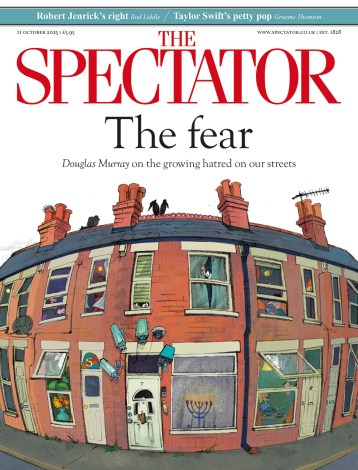The potter and author Edmund de Waal revisits familiar terrain at an angle in his third book, Letters to Camondo. Ten years after the publication of his debut memoir, The Hare with Amber Eyes, he is once again in Paris, lurking about the rue de Monceau, ruminating on dust, trying to make the dead speak.
He’s particularly keen to elicit a word from Count Moïse de Camondo (1860-1935), the last patriarch of a clan of absurdly rich French Jewish bankers with roots in Constantinople. The count was a friend and neighbour of de Waal’s cousin, the art historian Charles Ephrussi, whose collection of Japanese netsuke played such a large role in The Hare with Amber Eyes. The wary reader may ask: hasn’t de Waal had quite enough of the rue de Monceau? It seems he shares family ties and an appreciation of what Proust called ‘the life of still life’ with the obsessive, exacting Camondo whose main passion was collecting 18th-century decorative art.
His other passions were his children, Nissim and Béatrice, the fruit of a short-lived dynastic union with Irène Elise Cahen d’Anvers (the eldest daughter of Charles Ephrussi’s mistress). When Nissim was killed during an aerial mission in the first world war, Camondo bequeathed his hôtel particulier to France in memory of his boy. The Musée Nissim de Camondo was inaugurated in 1936, a year after the count’s death, the priceless objects in its rooms frozen in place. When people tell the Camondo story, they always begin at the end, with the Nazi death camps, where Béatrice, her daughter Fanny, her son Bertrand and her estranged husband Léon Reinach (of the Dreyfusard Reinachs) were murdered. Today the museum that carries Nissim’s name is a marker of widespread absence and dispersal.
The wary reader may ask: hasn’t Edmund de Waal had quite enough of the rue de Monceau?
By the time de Waal began to write his book he had spent ‘quite a few years’ nosing about the great house on the rue de Monceau, studying the porcelain and tapestries and digging in the family archives. The result of all that research takes the form of a series of letters to Camondo. This was an inspired idea, for it allows de Waal to achieve an intimacy of tone and directness of expression that are not present in French accounts of the saga. Here he is on the paradox of French Jewry, of which Camondo and others in his milieu were walking exemplars:
Your Jewishness is so discreet. It is 1933. Fanny has her bar mitzvah at the Temple Buffat. You give a sizeable donation for the Goncourt exhibition that is being curated. The Goncourts were vile about your family, but they are forgiven…Your generosity is applauded.
Constantinople is a lifetime away and you are a perfect Frenchman. This is a house of Montrachet, of tisane, the sounds soft on the carpets, percussive on stone…
You become part of the street, the neighbourhood, the city, the country so perfectly, so delicately aligned, assimilated, that you disappear.
There’s an unsettling quality to de Waal’s pursuit of Camondo that isn’t fully explained until late in the book, in a powerful address that is both a rupture with and a binding to all that precedes it. Yet from the start we intuit that de Waal, in the words of W.G. Sebald, is keeping ‘appointments in the past, in what has gone before and is for the most part extinguished’.
It can’t be easy to write to a stranger who died 86 years ago, which may account for occasional lapses of tone. A two-line missive telling the count what he already knows is tinged with preciousness (‘Nissim is Hebrew for miracle, your son is named for your father’), as are de Waal’s self-consciously poetic musings on porcelain (‘You can break it but you cannot destroy it. That is why the world is full of shards’). Sentences such as ‘Can I talk to you about the children’s bedrooms, Monsieur?’ and ‘We need to talk about this again’ underscore the epistolary artifice.
Overall, however, there is a spaciousness to the prose that allows the surfeit of gilt and candelabra and pier glasses and bergère chairs in Camondo’s house to breathe. In one of his last letters to the count, de Waal argues against the rage to clarify that which can never be clarified. History is right-here-now, he suggests, ‘it unfolds in our hands’.
He’s aware of the contradictions:
You make something to be a memorial, but memory is so dangerous. It feeds, it is contingent. You remember one thing and then you are lost. You pick up one thread and it starts to lead you to places you do not want to go.
In his case that would be a street he knows exceedingly well. This summer, the Musée Nissim de Camondo will mount its first exhibition by a living artist in its history. His name is Edmund de Waal.






Comments